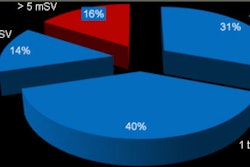Monday, November 28 | 3:40 p.m.-3:50 p.m. | SSE09-05 | Room E351
German researchers have collected evidence that 3-tesla MR with diffusion-tensor imaging (DTI) is feasible and beneficial for functionally assessing transplanted kidneys.The study at Düsseldorf University Hospital included 39 renal transplant recipients (mean age, 49.7 years) who were examined on a 3-tesla MRI system using a body-array coil. The patients were divided into two groups: Group A included patients with good transplant function and a glomerular filtration rate (GFR) of greater than 30 mL/min/1.73m2; group B had poor transplant function with a GFR less than 30 mL/min/1.73m2.
The researchers calculated fractional anisotropy (FA) and apparent diffusion coefficient (ADC) maps, and also analyzed medullary and cortical FA and ADC values on a region-of-interest basis.
Medullary and cortical FA values were significantly greater in group A than group B, while medullary and cortical ADC values also were significantly greater in group A than group B, according to the researchers.
Nonenhanced functional evaluation of renal transplants with DTI is feasible, they concluded. Fractional anisotropy values of the renal medulla correlate significantly with allograft function. Further studies are required to determine the clinical value of DTI for monitoring renal transplants.
Presenter Dr. Rotem Lanzman, from the hospital's department of diagnostic and interventional radiology, said the potential clinical benefits are twofold. "First, DTI allows for functional imaging and monitoring of renal allografts without the use of contrast material," he said. "Second, the high correlation between allograft function and fractional anisotropy values in the medulla highlights the high potential of DTI for functional imaging of native kidneys, although results from studies in transplanted kidneys are not unconditionally transferable to native kidneys."
Lanzman and colleagues plan to perform additional studies in patients with disease of the native kidney, such as renal fibrosis or renal cancer.


.fFmgij6Hin.png?auto=compress%2Cformat&fit=crop&h=100&q=70&w=100)





.fFmgij6Hin.png?auto=compress%2Cformat&fit=crop&h=167&q=70&w=250)











